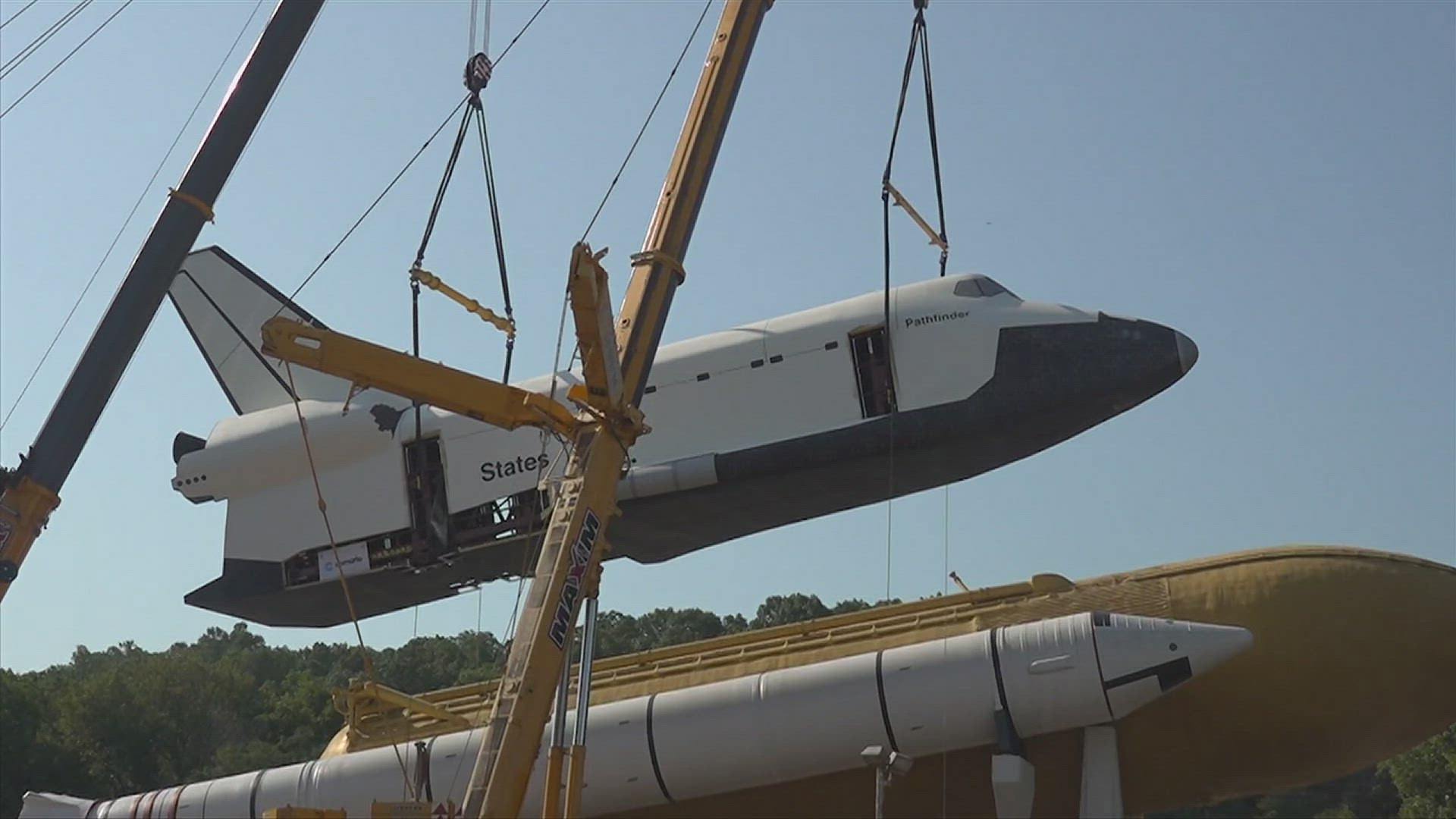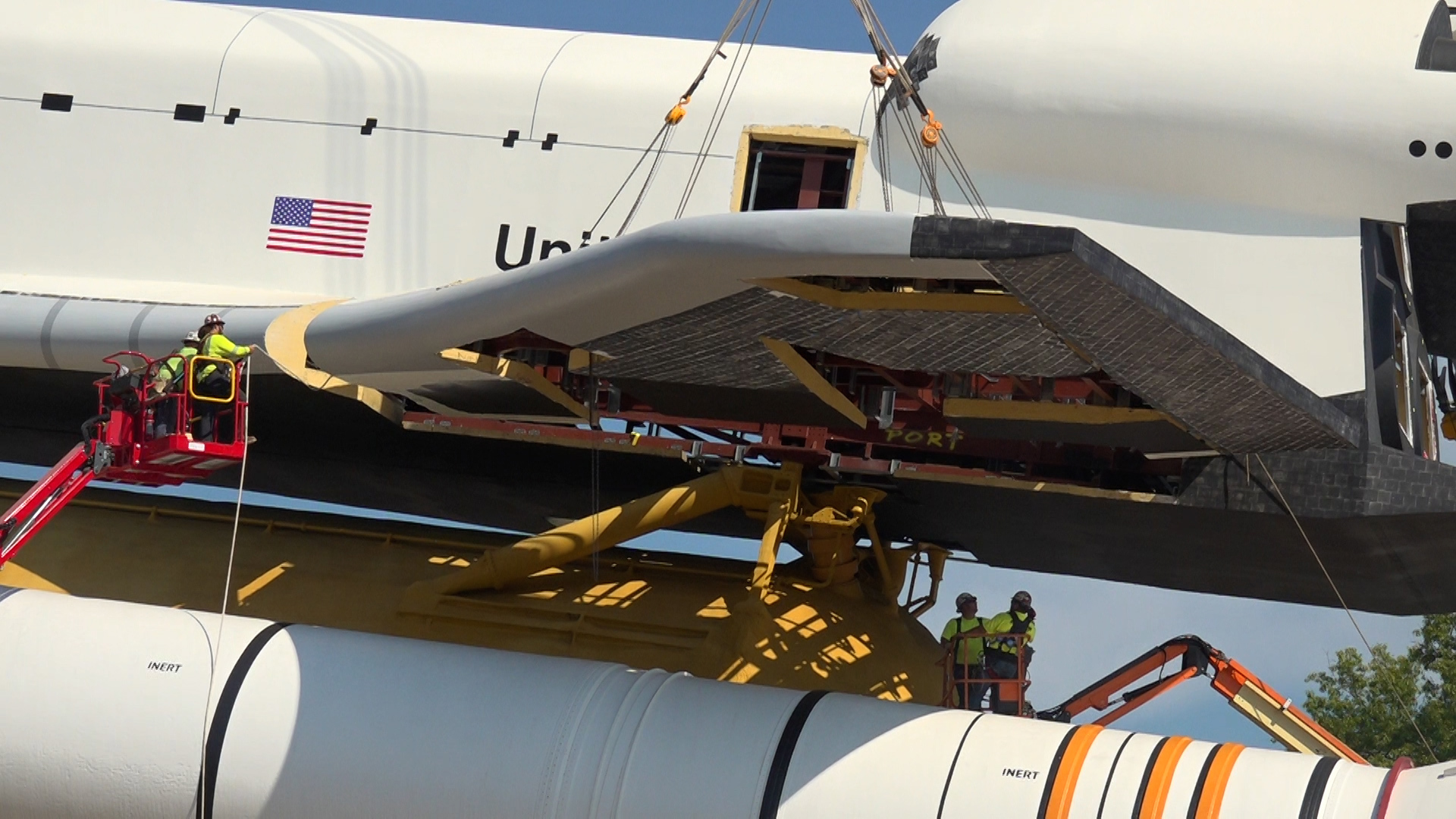HUNTSVILLE, Ala. — A nearly 50-year-old mockup that was part of the space shuttle development project is being reassembled for display at the U.S. Space & Rocket Center.
Two huge cranes lifted the "Pathfinder" orbiter model back into place as part of the full shuttle assembly outside the Huntsville museum.
It has been three-and-a-half years since crews removed Pathfinder and started a major renovation.
The shuttle had been a popular attraction since 1988, when it was first put on display. Since then, however, time and weather had taken a toll on Pathfinder.
Now, in a process that is expected to span three days, the full display is being reassembled. It began with the lifting of the body of the mock orbiter on Wednesday morning.
On Thursday, crews made more progress by reattaching the wings to the orbiter's body. This step is crucial in restoring Pathfinder to its full, iconic form.
Pathfinder Wings Reattached: Edited Highlights:
On Friday, the focus is on the main engine bells.
Pathfinder was built by NASA in 1977. Its purpose was to provide the agency with a better understanding of how it could move and handle an actual orbiter.
It was never designed to fly and was made primarily of steel and wood.
In the early 1980s, a group of Japanese businessmen purchased Pathfinder and modified it to fully resemble a flight orbiter. It was displayed from 1983 to 1984 at an exposition in Tokyo.
After the expo, Pathfinder returned to Huntsville, where it was mounted on the shuttle stack at the Rocket Center.
Recent refurbishment has included repair and retrofitting to the orbiter main body as well as painting and repairs to the external tank and solid rocket boosters. The mock orbiter was also lengthened to restore it to its original dimensions. It had been shortened for display at the Tokyo exposition.
The project began with Pathfinder's removal in early 2021. It was funded in part by a $500,000 Save America’s Treasures grant from the National Park Service.
PATHFINDER FAST FACTS
- Length (nose to vertical stabilizer tip) 121 feet, 10.5 inches
- Width (wingspan)- 78 feet, 2.5 inches
- Height (Belly to vertical stabilizer tip) – 48 feet, 1.5 inches
- Main body weight - 109.4 tons
- Each wing weight predicted – 15.1 tons
- Each engine bell – 1.2 tons
- Total assembled weight – 143.2 tons


